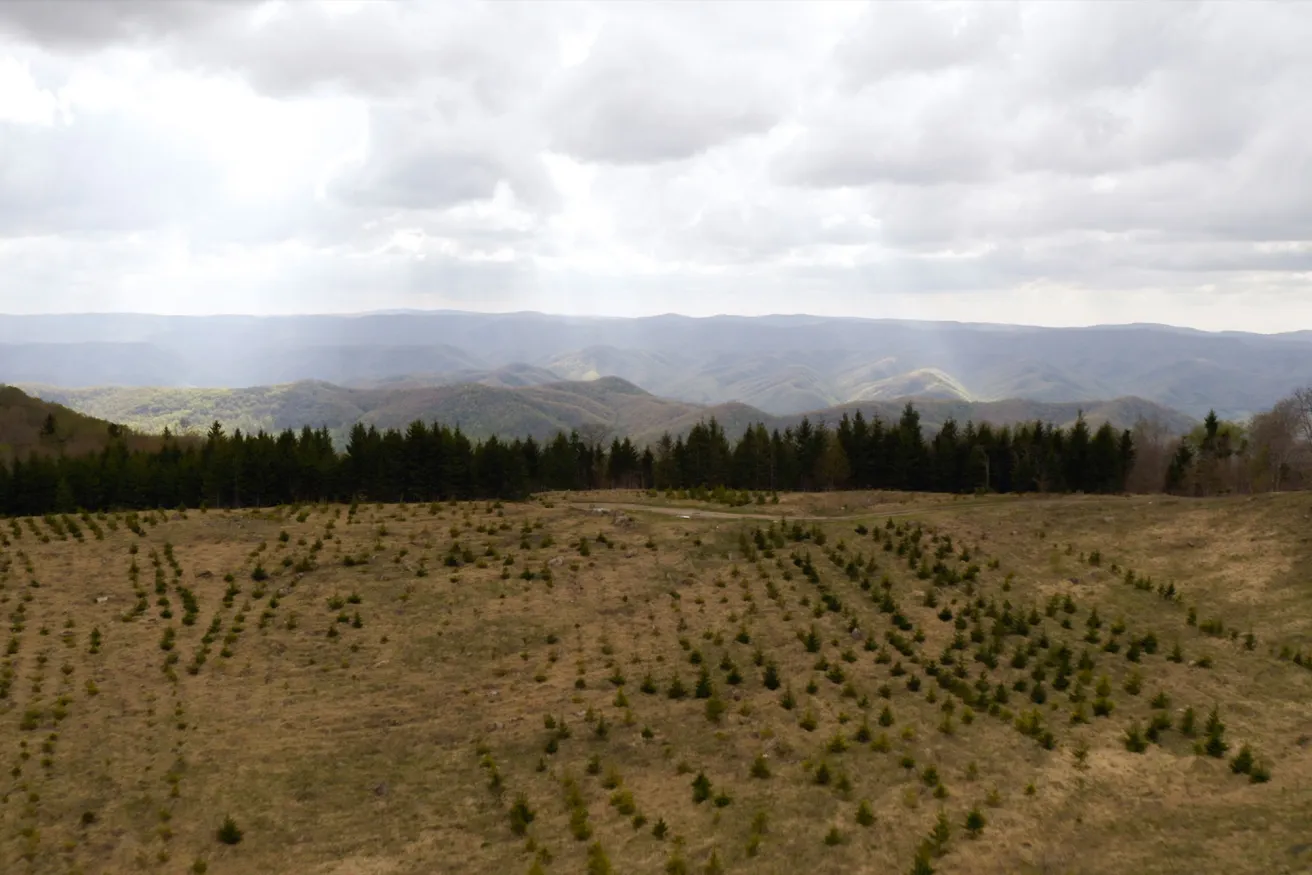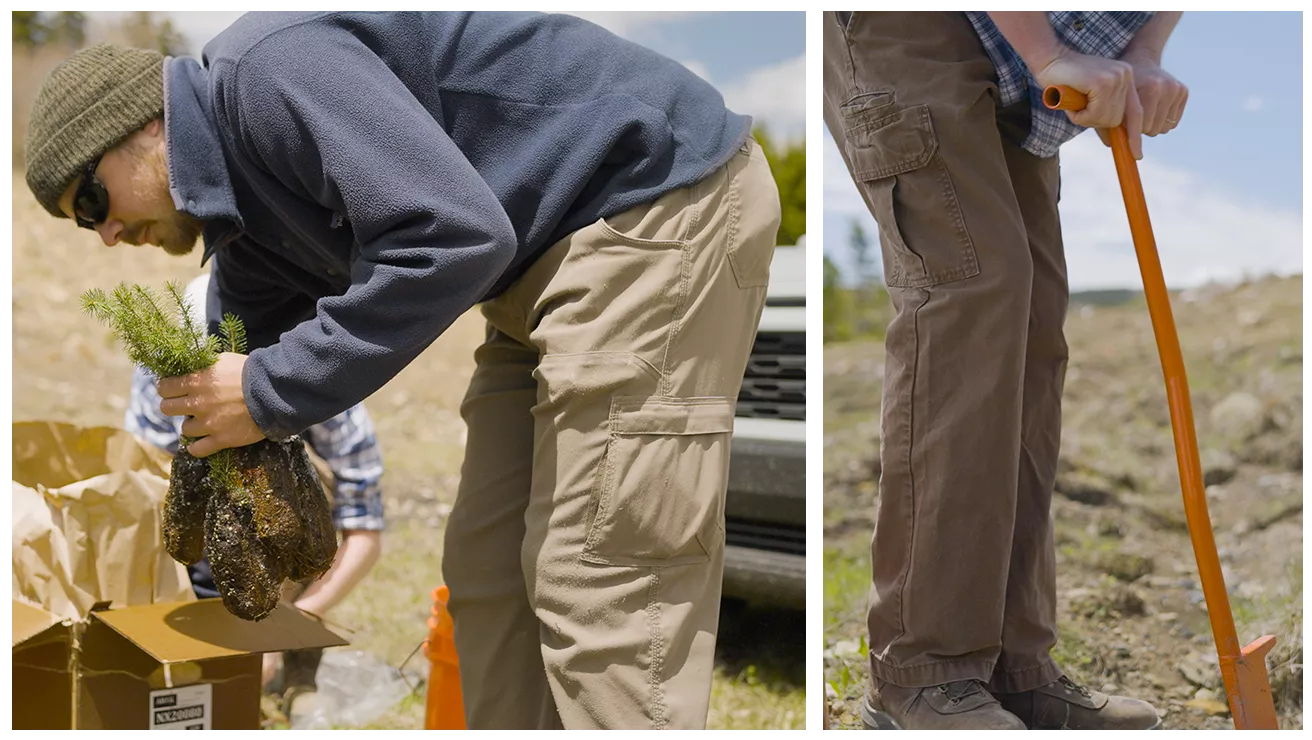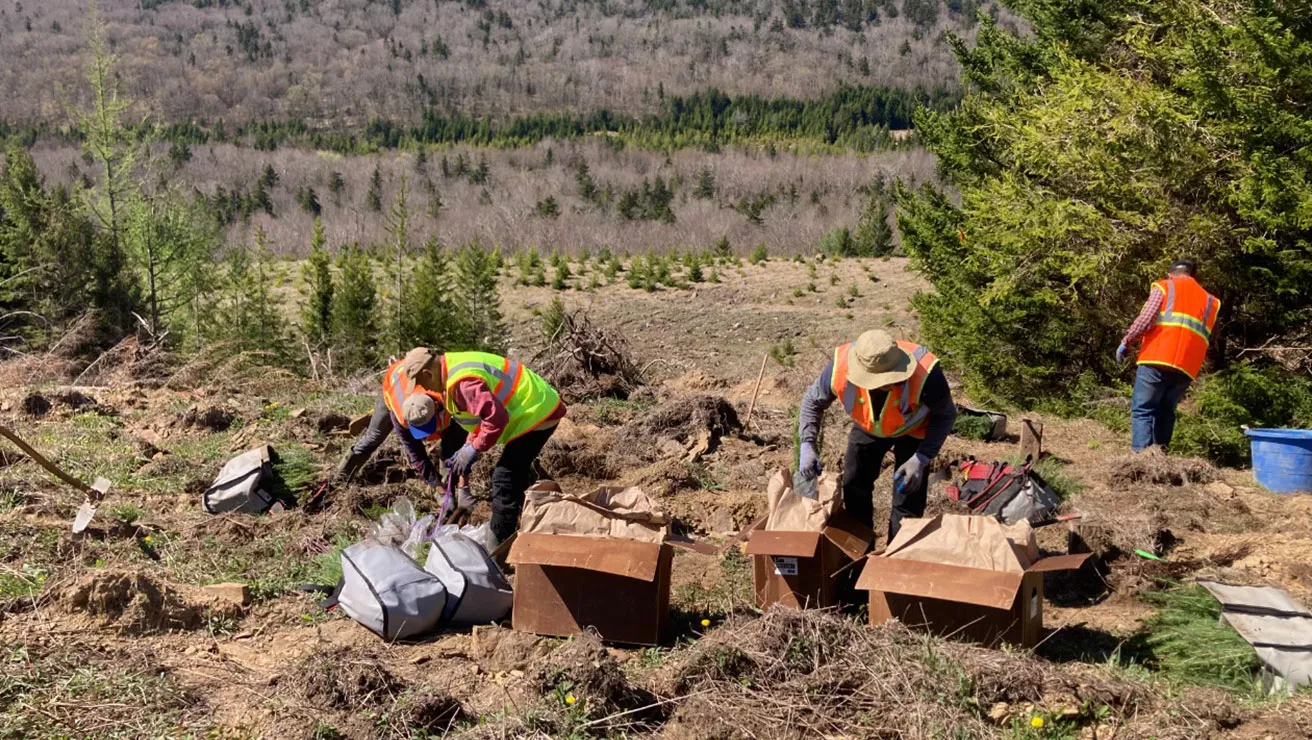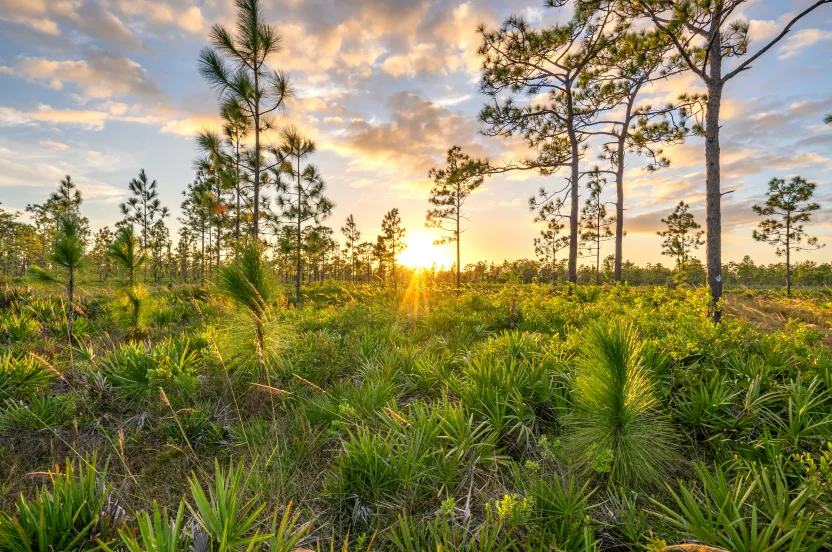Now live: The 2025 Canopy Report. Learn how Americans see trees. GET THE REPORT
A Journey to Reclaim the Land
Replanting former mine lands on the Monongahela National Forest.
August 9, 2023

Spanning more than 900,000 acres, West Virginia’s Monongahela National Forest is one of the most ecologically diverse areas in the country.
Scenic vistas, flowing streams, and abundant wildlife help to define its splendor.
But some areas acquired over the years by the U.S. Forest Service are reclaimed mine lands that weren’t properly restored. Compacted soil, a lack of native tree cover, and problematic invasive species plaque this land, and it is in need of healing.
This is where specialized reforestation efforts come into play. The Arbor Day Foundation and the U.S. Forest Service have partnered with nonprofit Green Forests Work to restore sections of these reclaimed mine lands. And the outcomes have been tremendous.
A Tried-and-True Method
Approximately 25,000 acres of land within the proclamation boundary of the Monongahela National Forest have been identified as areas in need of intense restoration. The work began in 2010, starting with 90 acres and a bulldozer. “The Forest Service honestly was a little bit hesitant at first of the idea of going in, and taking the big bulldozer, and ripping this stuff up. It seemed kind of counter-intuitive,” said Chris Barton, president of Green Forests Work and professor of watershed management at the University of Kentucky.
But the process was proven, and the first important step was to remove nonnative and invasive vegetation. After the land was cleared, it was ripped. “We rip it to three to four feet deep, and we do it in two directions so that the rips are perpendicular to each other,” said Michael French, Green Forests Work’s director of operations. “It really fluffs everything up. It allows water to infiltrate the soil. It allows roots to extend in all directions. Basically it's like tilling your garden — except on a forest scale.”

After the ground was prepped, planting could begin. A bio-diverse mix of high-value hardwood seedlings were planted, as well as smaller trees and shrubs. Because these were all native to this forestland, wildlife would benefit. And because the soil was exposed, native wildflowers would be able to establish on their own as well.
Within a couple years — with this first 90 acres doing well — more work commenced. Now 100–200 acres of the National Forest are restored each year through this unique partnership. Land is prepped, trees are planted, and wetlands are created in an effort to reestablish the original ecosystem.
The Importance of the Red Spruce
Restoring red spruce stands on the Monongahela National Forest is critical. At one time, more than 500,000 acres of red spruce forest sprawled across West Virginia. Due to decades of industrial logging and mining, however, only approximately 50,000 acres remain today. And that has caused problems for a number of endemic and migratory wildlife.
Incorporating native red spruce in the restored areas of the forest helps to ensure that these animals have access to the habitat they need for survival. One example is the Cheat Mountain salamander, a threatened species found only in this region. It requires the moist, peaty soils found amid the red spruces. And the northern flying squirrel relies on these trees for its food source: a fungus that grows on the roots of the red spruce.
The golden-winged warbler, a bird facing declining numbers, also relies on this forest type. “We're working in a priority area of conservation for the golden-winged warbler, which relies on young forest habitat,” said Michael. “We're creating that young forest habitat by creating more tracts every year over this past decade that we've been working. But because it is a slower-growing forest type, that young forest habitat will persist for a longer term as well.”
Positive Impacts for the Future
Beyond wildlife habitat, this restoration work provides a long list of tangible environmental benefits. One of the larger benefits relates directly to water. Runoff is a common problem on former mine land and can lead to sedimentation in streams as well as flooding. Through proper restoration, Chris adds that, “we can greatly diminish the amount of sediment production and erosion to streams.” The frequency of flooding is also reduced.

In addition, restoring mine lands can create great potential for carbon sequestration. “These mine-impacted lands are some of the best places to plant trees for the purposes of mitigating climate change,” said Michael. “Carbon will accumulate more quickly in the trees that we're planting because they're growing faster, the roots are extending underground. The soils of these mind lands can also act as [carbon] sinks for decades as it's building up that organic layer.”
The Work Must Go On
Over the last decade, hundreds of acres of compacted mine lands have been restored on the National Forest. But these reforestation efforts are far from over. Through dedicated supporters and strong partnerships, the lands of the Monongahela National Forest will once again be wild and beautiful.



